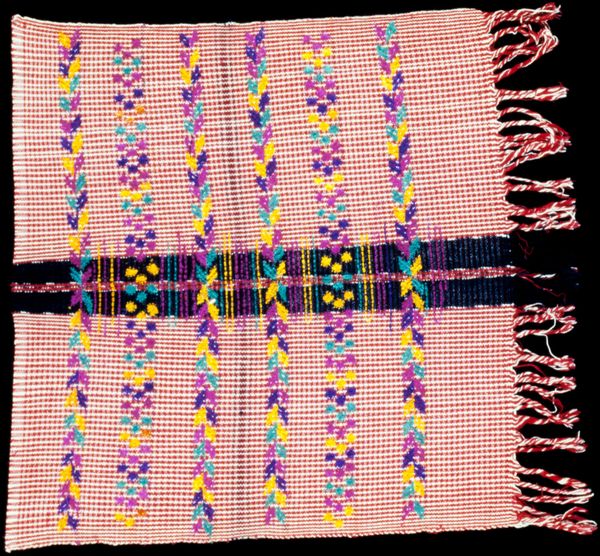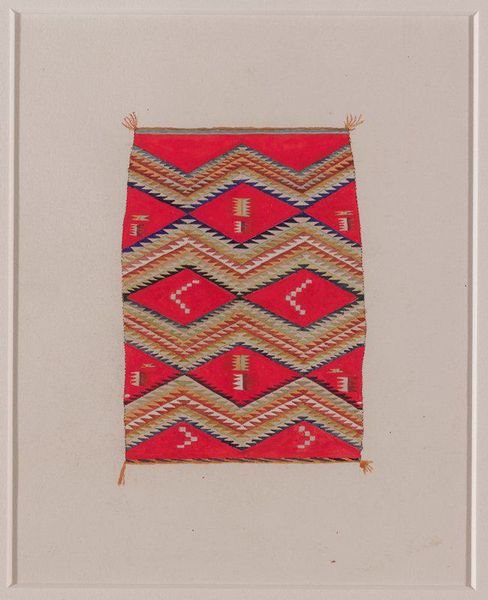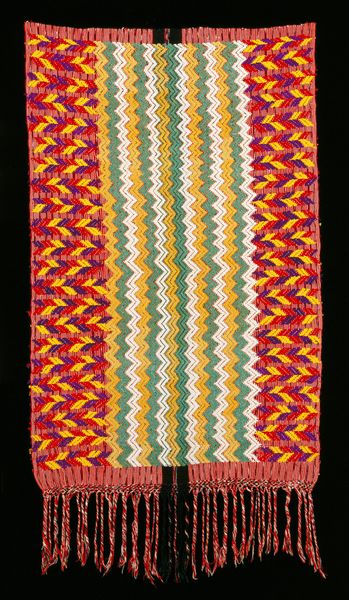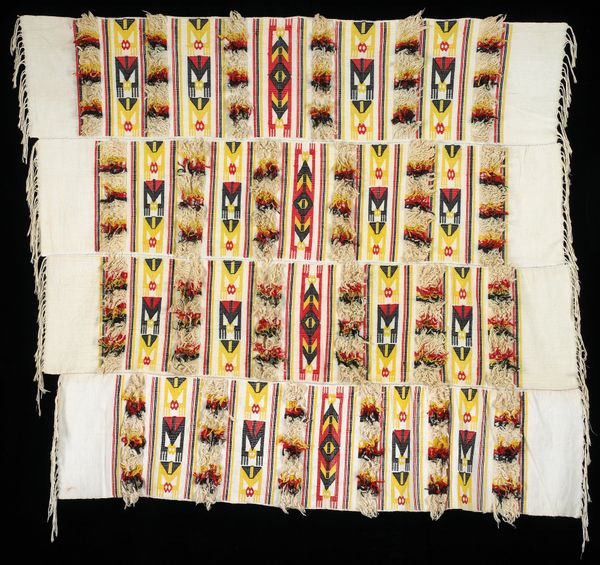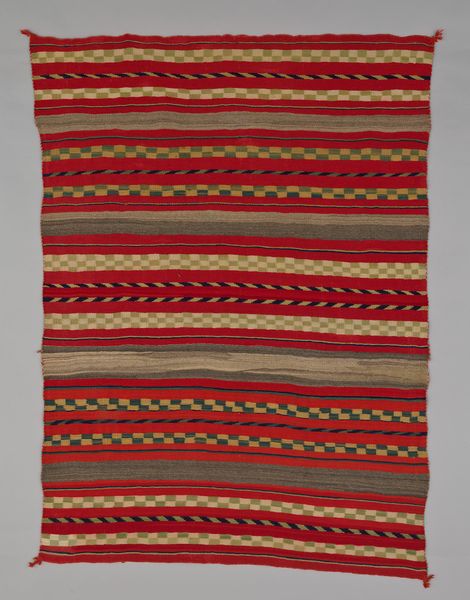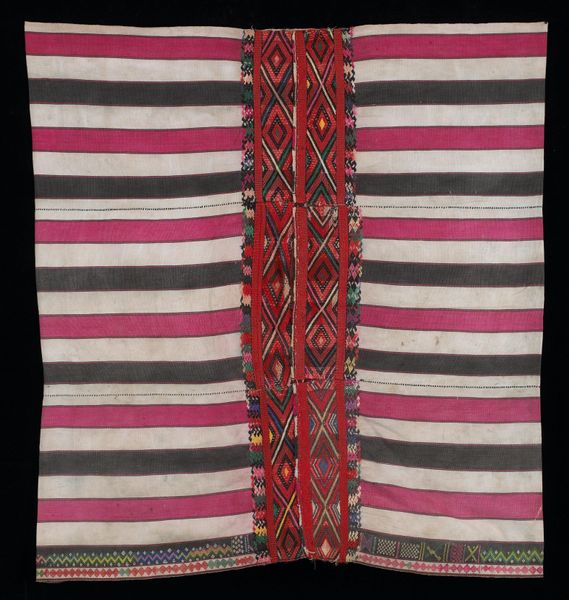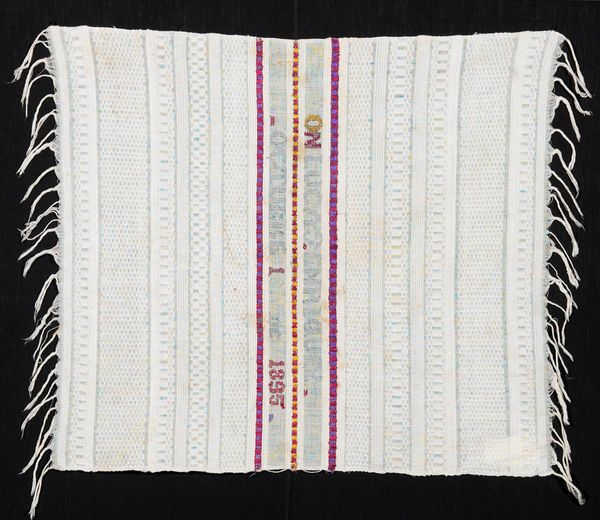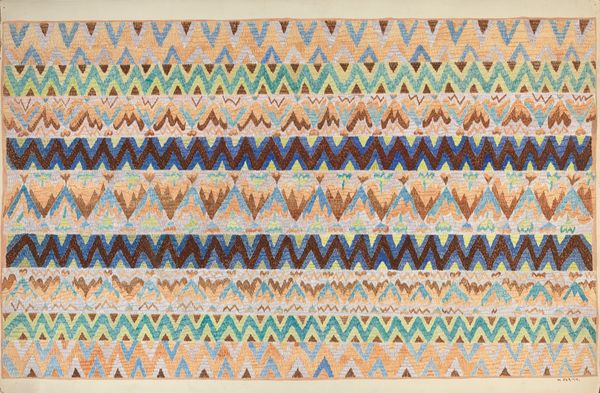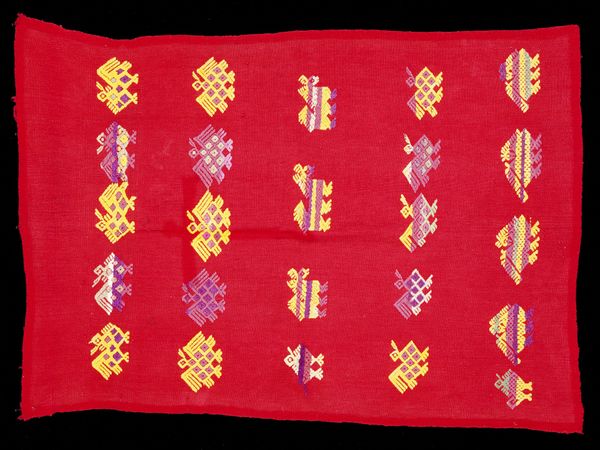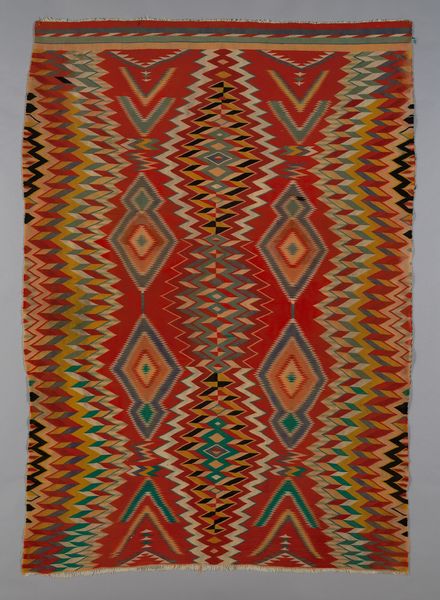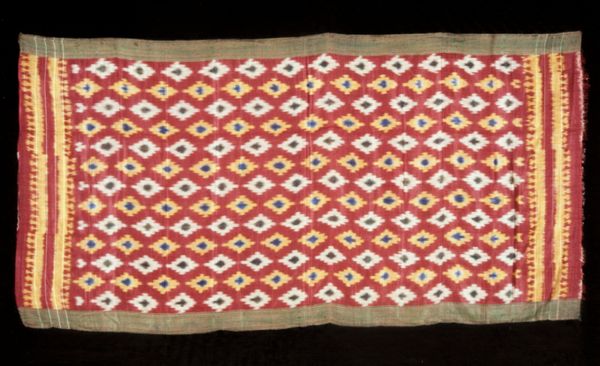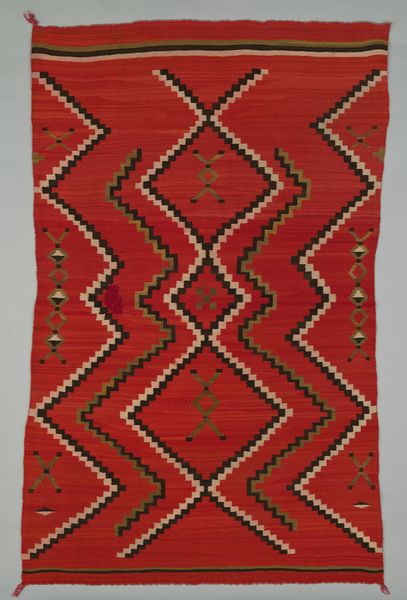
fibre-art, weaving, textile, cotton
#
fibre-art
#
weaving
#
textile
#
geometric pattern
#
geometric
#
repetition of pattern
#
cotton
#
repetitive pattern
#
indigenous-americas
Dimensions: 34 1/4 x 19 1/2 in. (87 x 49.53 cm)
Copyright: Public Domain
Curator: Welcome. Here we have a 'tzute', a Maya cloth woven between 1955 and 1960, rendered in cotton. Editor: It strikes me as powerful, yet humble. The repetitive zigzags against that vibrant ground--it almost pulses. What was its purpose? Curator: Tzutes are multi-functional cloths used by Maya people in Guatemala. These textiles signal community affiliation, social status, and personal identity. Imagine this draped during ceremonies or as a head covering for women. Editor: The colours feel deeply symbolic. Was that palette common or determined by specific lineages? Curator: Both. Colour selection links to cosmology, ancestral memory, and even the economics of available dyes within each region. Notice the repeated geometric forms. They're not just decorative. They tell stories. Editor: Right, these motifs must carry a huge amount of coded information, reflecting generations of knowledge, but does the institution recognize the voices and rights of Indigenous communities whose cultural heritage is displayed? Curator: Increasingly, museums aim to build partnerships and ethical frameworks regarding collections like these, although such collaborative representation and repatriation efforts are ongoing processes with complexities related to cultural ownership. Editor: Absolutely. Looking at it now, this tzute transcends its objecthood. It becomes an archive—a wearable declaration of resilience in the face of ongoing challenges of cultural erasure and neocolonial extraction. Curator: Precisely. It underscores art's role beyond aesthetics; it's living testimony. Thinking about the socio-political milieu, this tzute embodies resistance through continuity. It reaffirms cultural identity in the face of pressure to assimilate. Editor: So, what appears as a 'simple' cloth is actually a radical act. It's a story stitched in defiance, a tangible connection to collective memory and enduring identity. I keep coming back to that strength. Curator: Me too. These textiles were integral in reinforcing Maya social structures, embodying political significance, and serving cultural survival strategies amid periods of intense suppression and societal transformation. Editor: Looking closely at the fringes of this cotton tzute, I can almost hear the rhythmic beat of the loom. It truly holds so much significance. Curator: It's a reminder that artistry, agency, and advocacy can beautifully coexist.
Comments
No comments
Be the first to comment and join the conversation on the ultimate creative platform.
